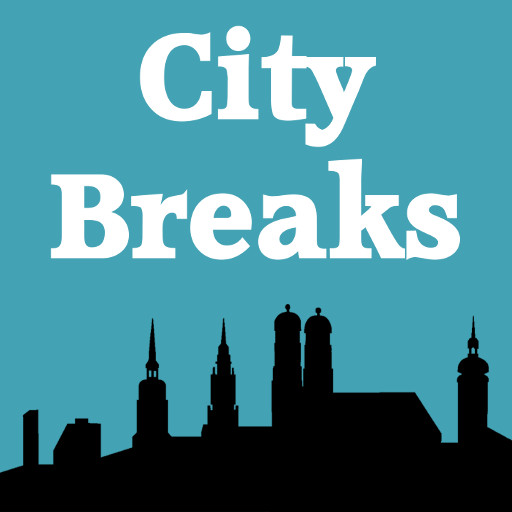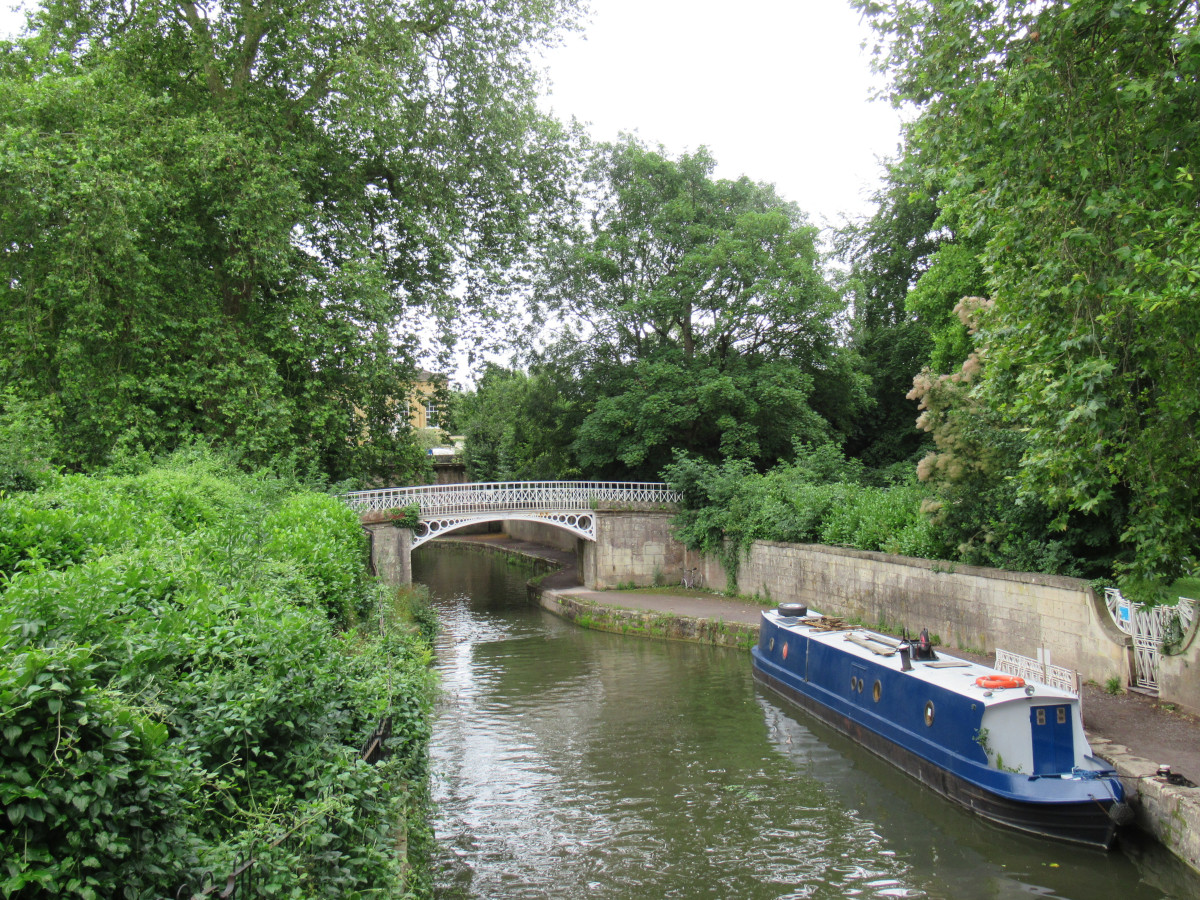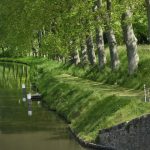Parks and Walks in Bath: a genteel walk – or ‘parade’ as it was known in the 18th century! – is a very ‘Bath’ thing to do and this episode will take you on lots. We visit some of the loveliest parks and explain their history: think Jane Austen at a fireworks display and a brief glimpse of Queen Victoria’s ankles. And we suggest some excellent city centre routes which take you past the things you most want to see, plus some more energetic ideas for leaving the city centre and getting out into the surrounding countryside.
Listen to the POdcast
Bath’s parks

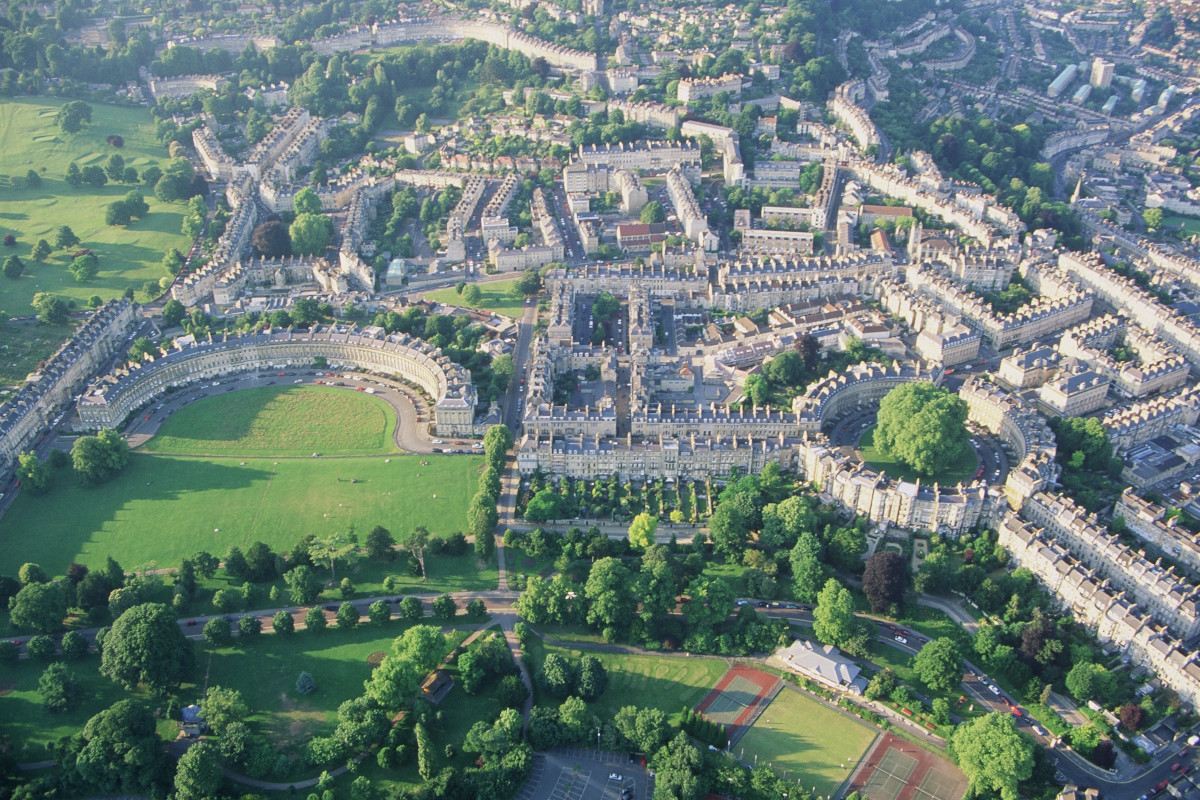
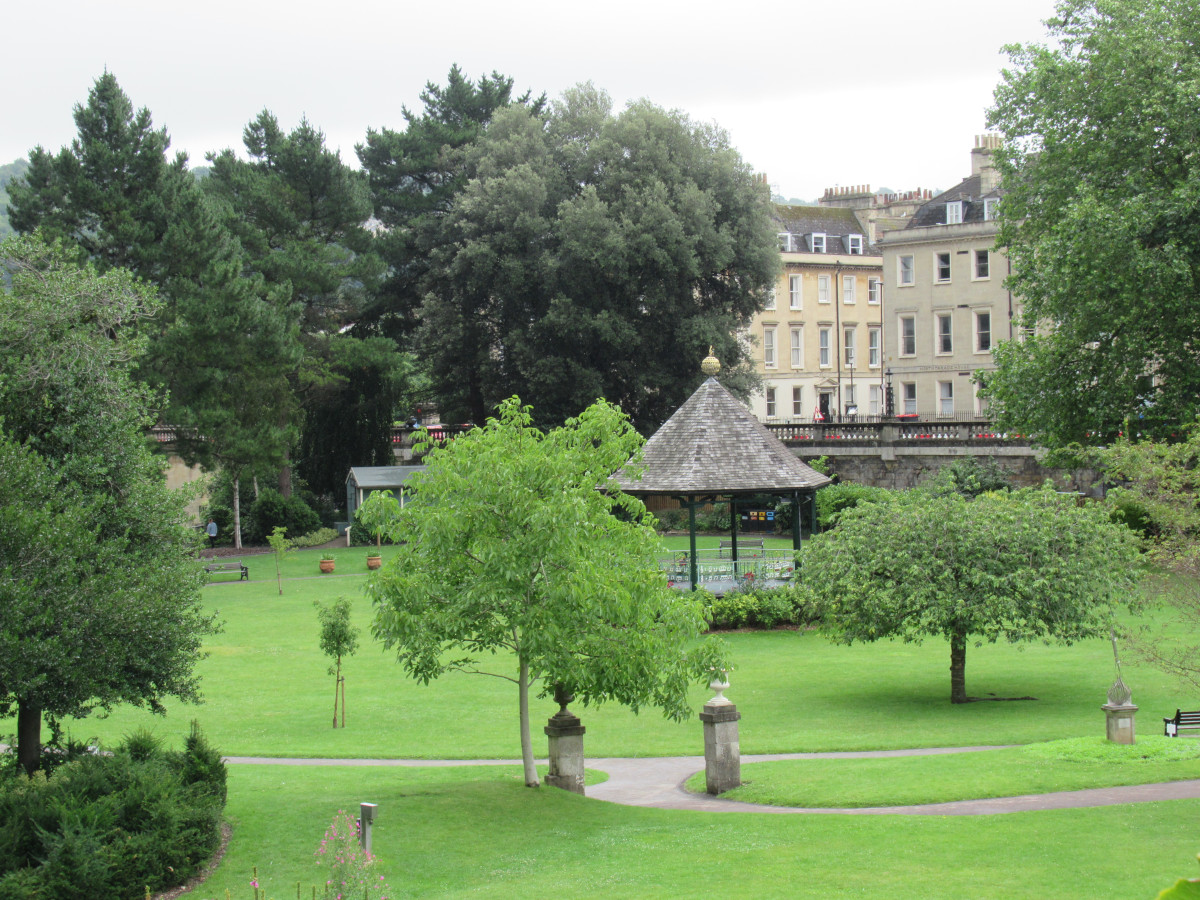
Parade Gardens, along the river just near Pultney Bridge, was set out in the 18th century as a place for visitors to walk and enjoy fine views up into the hills surrounding Bath, or perhaps to linger in the summer house or stop at the gift shop. Today, there’s a small fee to enter and then you can wander or linger at will, looking out for the flower beds, sculptures – including one of Bladud (see episode 04) https://citybreakspodcast.co.uk/baths-hot-springs – a sundial and perhaps even a brass band playing in the bandstand.
When Sydney Gardens opened in 1795, it was the largest pleasure garden outside London. The New Bath Guide, published in 1801, gives a good idea of what you can still find there today: ’16 acres, interspersed with a great number of small, delightful groves, pleasant vistas and other charming lawns, intersected by serpentine walks which at every turn meet with shady bowers ….. the Kennet and Avon Canal running through.’ It was originally a commercial enterprise, open for public breakfasts, evening promenades and gala nights with music and fireworks.
Today, it is simply a pretty park, but as you wander, you might wonder whether Jane Austen was among the 2000 guests – including ‘most of the principal Gentry of the city and neighbourhood’ – who gathered here on June 10th, 1790, for a celebration of King George III’s birthday. A description published in the Bath Evening Chronicle that year described it as ‘an excellent Concert of Musick, and a superb display of Fire-Works which were brilliantly illuminated’. Jane Austen certainly attended a similar event in 1799, writing in a letter that ‘Last night we were in Sydney Gardens again … we were in very good time for the Fireworks, which were really beautiful and surpassed my expectations.’
Victoria Park is Bath’s largest park, being 53 acres. It was laid out 1830 and opened by the 11 year-old Princess Victoria – the 1st municipal park named after her. In fact, she was upset to hear that someone had commented disparagingly on the thickness of her ankles and she swore never to return to Bath. And indeed, she never did. The park is huge and magnificent and includes the city’s botanical gardens, (with 50,000 plants and rare trees), a scented walk, a magnolia lawn, a Temple of Minerva, a duck lake, a bandstand and a vast children’s adventure playground.
city centre walks
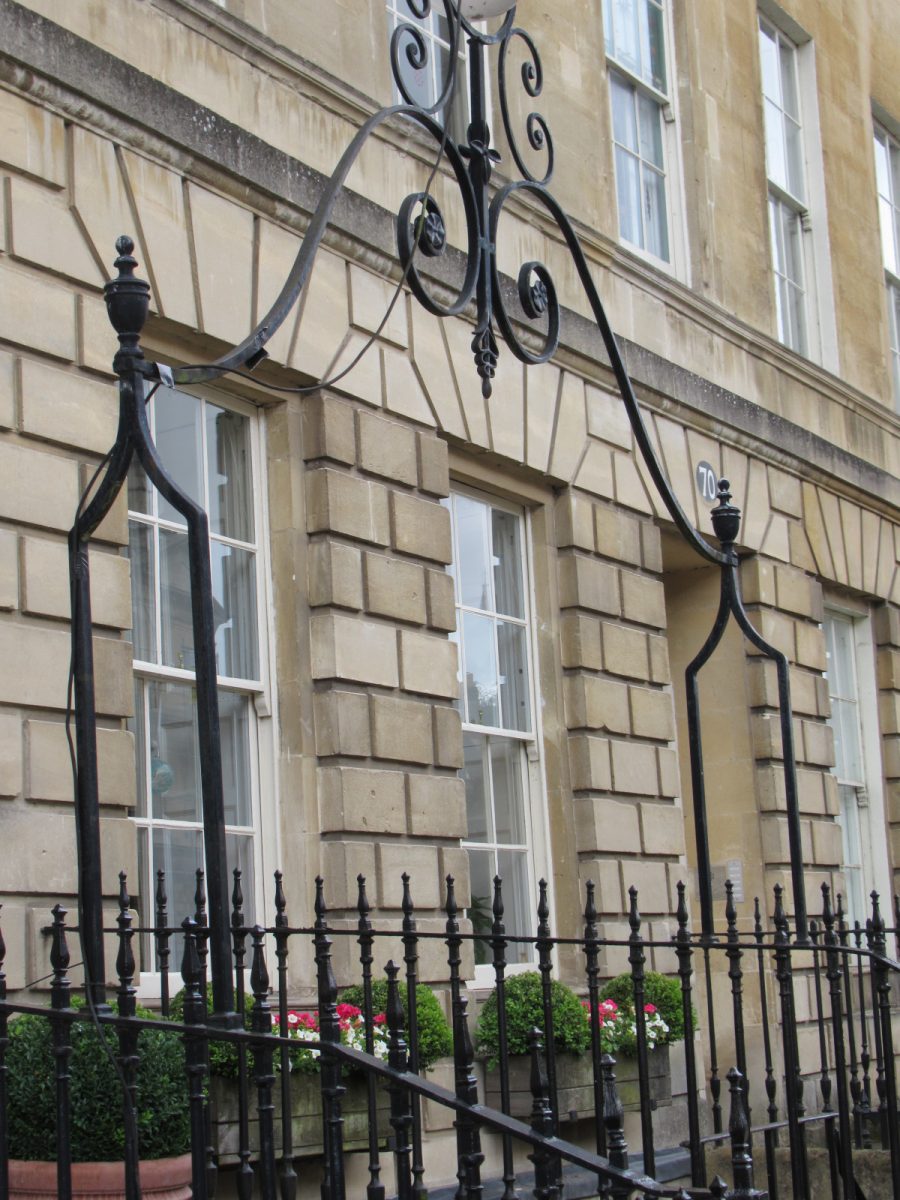
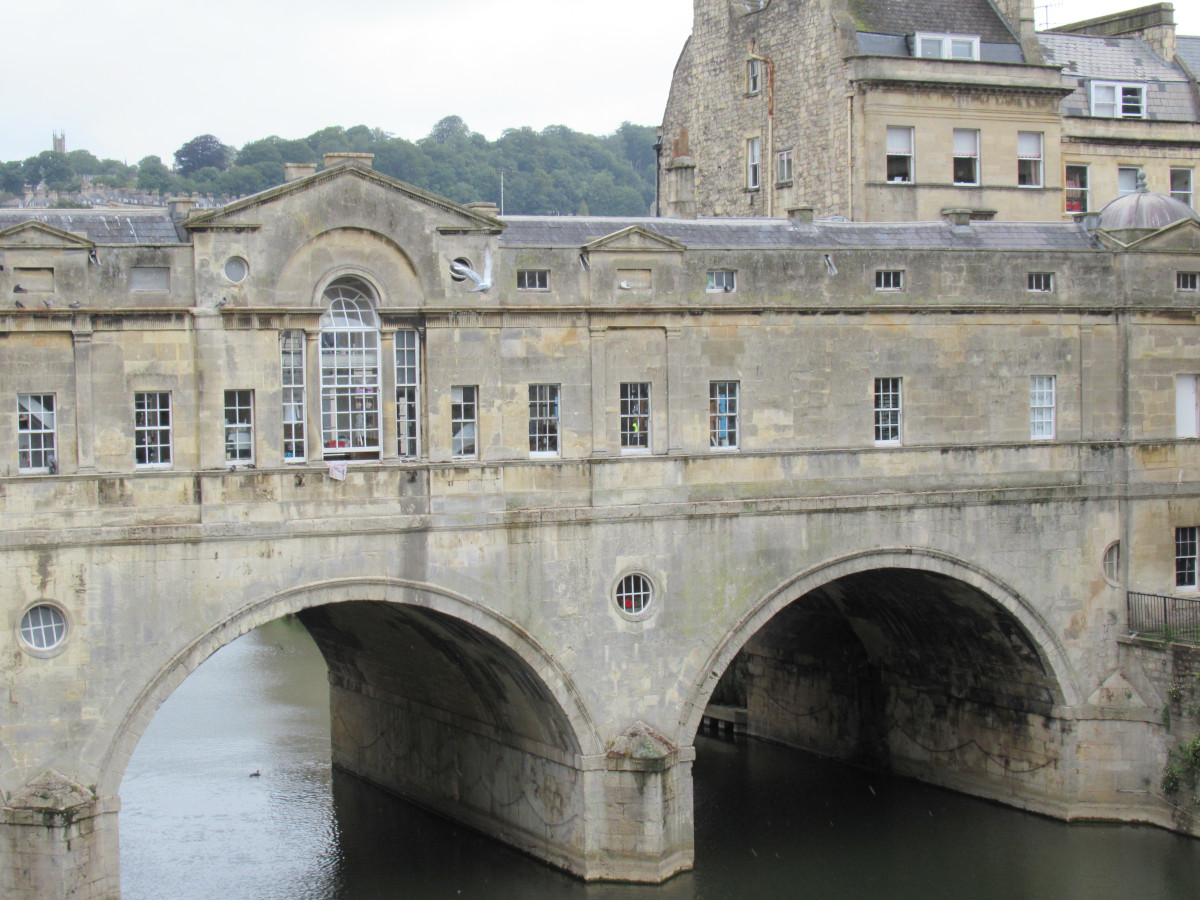
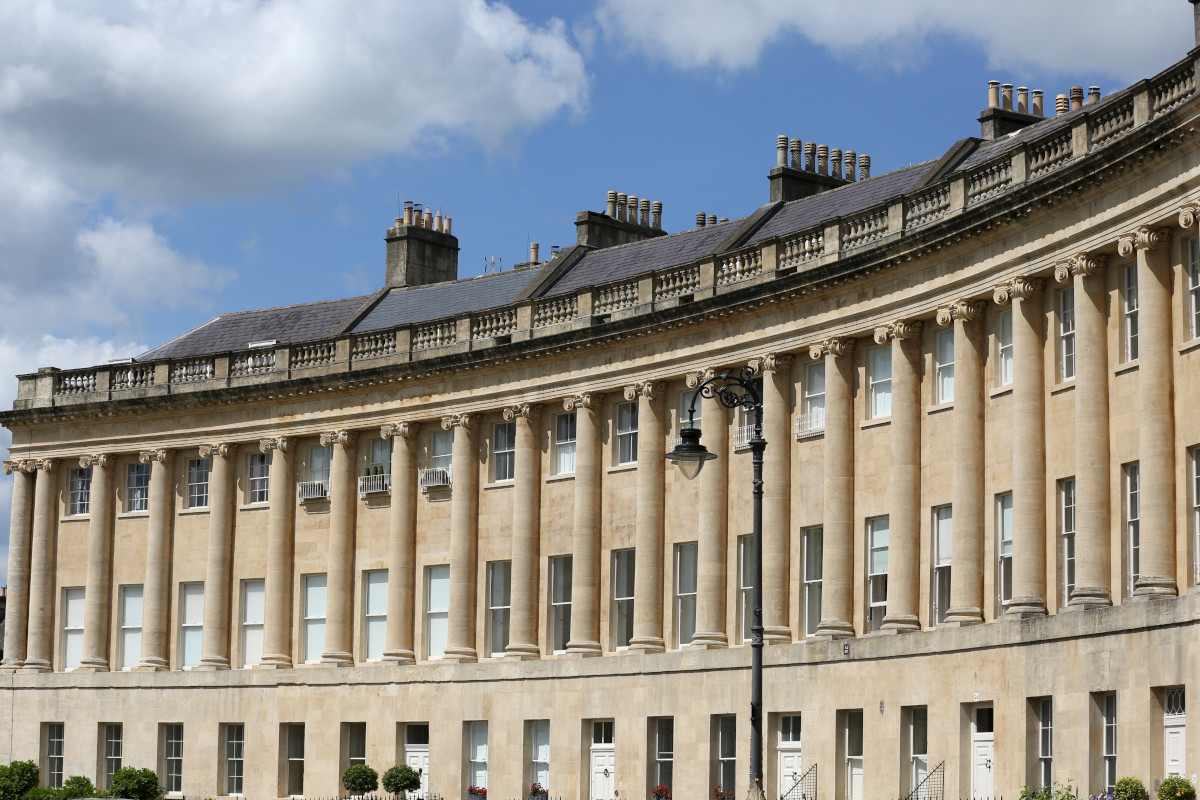
For a short, but very scenic city-centre walk, go down the steps of Pultney Bridge, then walk up the river to the next bridge, cross it and loop back up Grand Parade to your starting point. Sights of the weir and the bridge are some of the most photogenic in Bath. Pultney Bridge, built in 1789, was modelled on the Ponte di Rialto in Venice and it’s one of only a handful of bridges anywhere in the world which has shops along it. (There are descriptions of its heyday on the podcast).
To lengthen this walk, leave the bridge towards Laura Place and go down the very grand Great Pultney Street which is 100 feet wide and 1000 feet long. You can then do a loop via Henrietta Gardens, Henrietta Park and Henrietta Street, back to Laura Place, pondering perhaps that Sir William Pultney, who financed all of this area, named the streets after himself and his daughter, Henrietta Laura. He was a plantation owner with lands in Tobago and Dominica and there is more on him on the podcast. Note that the side streets off Great Pultney Street are often very short because he ran out of money.
Another walk around Bath’s Georgian splendour starts in Queen Square, from where you can go up Gay Street to The Circus, then along Brock Street to the Royal Crescent. Next, you could visit Victoria Park, and / or return to the city centre via Margaret Buildings – where there’s a collection of very browse-able independent shops – Circus Mews, past (or into!) the Assembly Rooms and then back down Milsom Street. The latter is the city’s main shopping street and is mentioned in a number of Jane Austen novels, for both she and some of her characters shopped there.
So much then, for parks and walks in Bath itself. There are lots more ideas for getting out of the city centre into some of the beautiful countryside which surrounds Bath.
further afield
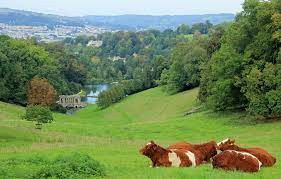
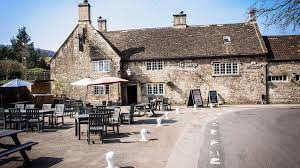
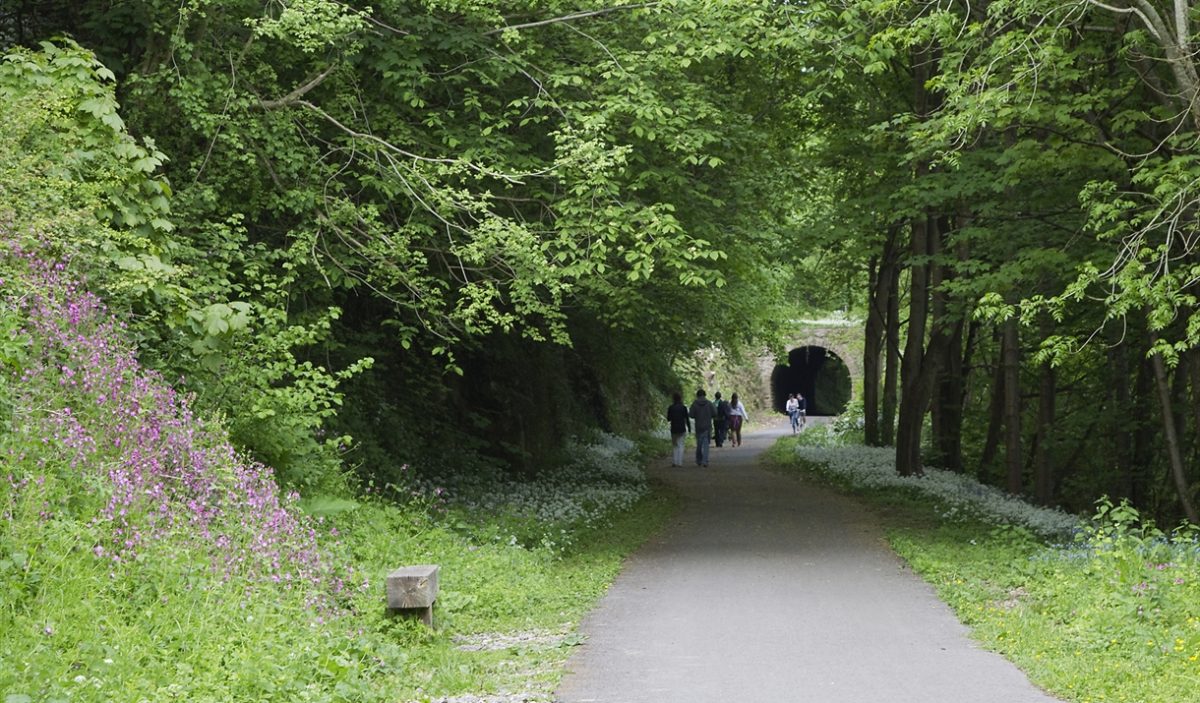
From Sydney Gardens you can follow the canal towpath, either to the George Inn at Bathampton, a mile and a half away, or perhaps to Bradford-on-Avon, a walk of 10 miles. You will be walking along the Kennet and Avon Canal, built in 1810 to connect those two rivers and open up a trade route between Bristol and London. It was closed in 1951, superseded by the railway, but reopened as a walking route by volunteers in 1990.
The Two Tunnels Walk forms part of the National Cycle Network, so you can walk or cycle it. It loops around the edge of Bath and will take you over Pultney Bridge, through two disused railway tunnels and over an aqueduct. You can download a map of the route.
The Bath Skyline Walk, described as being of ‘moderate difficulty’ is a six-mile circular route from the city centre which takes you up into the surrounding hills and ‘through fields and woodlands and over the sites of ancient settlements and quarries that once delivered Bath stone to the city.’ You will see Sham Castle ( a 2-demensional folly), Claverton Manor, now home to the American Museum, and Prior Park, built in the 1730s by a newly rich Ralph Allen. He said himself he built it ‘to see all Bath and be seen by all Bath’ and although it’s now private property you will get glimpses of the magnificent landscaped garden with its grotto, gothic temple and pineapple house.
Listen to the POdcast
reading suggestions
Guide to Bristol and Bath Pub Walks by Nigel Vile
Bath Skyline by Amy Feldman
links for this post
George Inn at Bathampton
Bath Two Tunnels Walk
Information on Bath Skyline Walk
Map for Bath Skyline Walk
Last Updated on November 24, 2024 by Marian Jones
